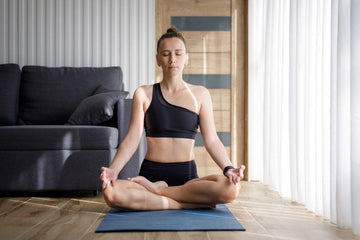Mindfulness, also known as mindfulness , is more than just a current trend - it's a way of life that increases awareness of the present moment. In a world that can often be hectic and overwhelming, mindfulness offers a way to pause, breathe, and fully experience the moment. This article explores what mindfulness is, the benefits it offers, and how to incorporate it into your daily routine.
What is mindfulness?
Mindfulness means being fully aware of the present moment, with an attitude of acceptance and non-judgment. It involves noticing your thoughts, feelings and bodily sensations without analyzing or judging them. This practice has its roots in Buddhist traditions, but has also become popular in the West in recent decades, particularly through the work of Jon Kabat-Zinn, the founder of the Mindfulness-Based Stress Reduction (MBSR) program.
Benefits of mindfulness
1. Stress reduction:
•Mindfulness helps reduce stress by teaching us not to let our thoughts and feelings overwhelm us. Studies show that regular mindfulness practice can lower levels of cortisol, a hormone linked to stress.
2. Improved mental health:
•Mindfulness can reduce symptoms of anxiety and depression. Learning to focus on the present moment can reduce ruminations and negative thought patterns.
3. Increased concentration and attention:
•Through mindfulness, we can improve our ability to focus on a task. This happens because we train ourselves to recognize distractions and let them go in order to focus on what is important.
4. Better handling of emotions:
•Mindfulness promotes emotional intelligence by helping us to better understand and regulate our feelings. Instead of reacting impulsively to emotions, we learn to act consciously and reflectively.
5. Physical well-being:
•Regular mindfulness practice can reduce physical symptoms such as high blood pressure, sleep disorders and chronic pain. This happens because mindfulness puts the body into a state of relaxation and activates the body's self-healing powers.
Mindfulness techniques
There are various techniques to practice mindfulness, from simple breathing exercises to formal meditations:
1. Breathing meditation:
•Sit or lie down in a quiet place. Focus on your breathing - inhaling and exhaling. Watch the air flowing in and out of your lungs. If your mind wanders, gently bring your attention back to your breath.
2. Body scan:
•During the body scan, you direct your attention to different parts of your body one after the other, from your toes to your head. You consciously perceive the sensations in each area without judging or changing them.
3. Walking meditation:
•Walking meditation involves walking slowly and consciously, paying attention to each step, the feeling of contact with the ground and the movements of your body. This can be particularly calming and creates a deep connection to the present moment.
4. Mindful Eating:
•Eat slowly and mindfully, noticing the taste, texture and smell of food. Pay attention to how your body reacts to the food. This can help regulate eating behavior and develop a deeper appreciation for food.
5. Guided meditation:
•For beginners, a guided meditation can be helpful. This involves following the instructions of a teacher or an app that leads you through the mindfulness exercises.
Integrating mindfulness into everyday life
Mindfulness can be integrated into every aspect of life, not just formal meditation sessions:
• Morning routine: Start the day with a few minutes of mindfulness. This could be a short breathing exercise or a conscious awareness of the first activities of the day.
• Mindful listening: When you speak to someone, be fully present. Listen without interrupting or immediately judging.
• Take a break: Take regular short breaks in which you pause, breathe deeply and reflect on the present moment.
Conclusion
Mindfulness is a powerful practice that can help you reduce stress, improve mental health, and increase overall well-being. By practicing regularly and integrating mindfulness into your daily routine, you can build a deeper connection with yourself and your environment. Start with small steps and let mindfulness become a permanent part of your life.





